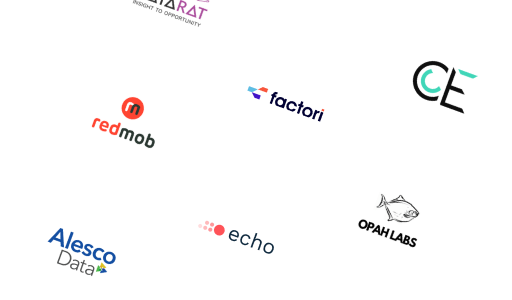Human Capital Data: Examples, Providers & Datasets to Buy

- Overview
- Datasets
- Use Cases
- Attributes
- Guide
- FAQ
- Overview
- Datasets
- Use Cases
- Attributes
- Guide
- FAQ
What is Human Capital Data?
Human capital data encompasses quantitative and qualitative information about a company’s workforce. It includes details about employee demographics, organizational structure, learning and development, compensation, turnover, productivity, and skills.
This data is used to optimize internal operations, benchmark workforce performance against competitors, support strategic HR planning, and even assess company value during due diligence or investment analysis.
With the rise of workforce analytics, many human capital data providers now offer API integrations, dashboards, and AI-powered tools to visualize and activate insights in real-time.
What Are Examples of Human Capital Data?
Human capital data comes in various forms and offers deep insight into workforce health and potential. Key examples include:
- Workforce Demographics: Age, gender, tenure, and diversity composition of employees.
- Headcount Data: Total number of employees, department breakdowns, and hiring trends.
- Compensation Data: Salaries, bonuses, benefits, and equity distribution by role or level.
- Skills Inventory: Technical and soft skills mapped across the organization.
- Training & Development: Learning hours per employee, certifications, and upskilling programs.
- Organizational Charts: Team structures, reporting lines, and leadership positions.
- Turnover & Retention: Attrition rates, reasons for exit, and employee tenure trends.
- Workforce Productivity: Output metrics tied to employee performance or team efficiency.
- Workforce Engagement: Survey results, sentiment analysis, and pulse checks.
Best Human Capital Databases & Datasets
Data providers on Datarade offer rich datasets tailored for workforce planning, HR benchmarking, or investor intelligence. Depending on your use case, you might need data specific to compensation, DEI (Diversity, Equity & Inclusion), or workforce turnover.
Some human capital datasets provide granular employee-level data (aggregated and anonymized), while others focus on company-level indicators or industry-wide benchmarks. Large-scale employer datasets can also be used for AI training, market analysis, and global expansion strategy.

ESG Data | Impact Investing Data | 14000+ Companies | Monetized Impacts on Natural, Human & Financial Capital

Map Data | Global | Mobility-Enhanced Spatial Coverage

Environmental Data | Sustainability Data | ESG Data |14k+ Listed Companies

SDG (Sustainable Development Goals) Impact Data | Sustainability Data | 14k+ Companies

Any data from Any website - Data provider to 8000 global customers - get a response within 5 minutes by contacting us at scrapehero.com

EPFR Core Offerings - Fund Flows and Allocations Data
Can't find the data you're looking for?
Let data providers come to you by posting your request
/postings/new?utm_content=search_results_page&utm_medium=platform&utm_source=datarade
Popular Use Cases for Human Capital Data
Human capital data is critical to both internal operations and external evaluations. Common applications include:
- Workforce Planning: Identifying hiring needs and succession risks.
- HR Benchmarking: Comparing compensation, diversity, or engagement across peers.
- Talent Risk Analysis: Understanding turnover trends and hiring bottlenecks.
- Organizational Mapping: Analyzing company hierarchy and decision-makers.
- Investment Intelligence: Evaluating leadership strength, hiring velocity, and team composition before mergers or acquisitions.
- Career Pathing: Understanding employee trajectory within a company for career development or executive scouting.
- DEI Auditing: Measuring progress toward inclusion goals and compliance.
Main Attributes of Human Capital Data
The usefulness of human capital data depends on the depth, reliability, and recency of its attributes. Common fields include:
- Employee Headcount by Role, Team, or Region
- Gender, Age, Tenure, and Education Level
- Average Compensation by Role or Level
- Organizational Structure & Departmental Reporting Lines
- Training Program Participation Rates
- Skills & Certifications Inventory
- Employee Sentiment or Engagement Scores
| Attribute | Type | Description | Action |
|---|---|---|---|
| String | The name of a company or business, might be the legal or brand name. | View 3 datasets | |
| String | The International Securities Identification Number (ISIN). | View 3 datasets | |
| String | The country code in Alpha-2 format (ISO 3166) | View 2 datasets | |
| String | The Internet Protocol version 4 (IPv4) address of an endpoint. | View 1 datasets | |
| String | The internet Protocol version 6 (IPv6) address of an endpoint. | View 1 datasets | |
| Float | The latitude of a point on earth's surface. Commonly abbreviated as "lat". | View 1 datasets |
Why Is Human Capital Data Important?
Business Strategy & Workforce Optimization
Human capital is one of the most important intangible assets for any company. Having data on team composition, capabilities, and employee sentiment supports better strategic planning. Companies can realign teams, uncover training gaps, and benchmark performance against peers to stay competitive.
Investor Evaluation & M&A Due Diligence
Investors are increasingly analyzing workforce metrics during due diligence to assess talent risks, succession planning, and management quality. For instance, fast-growing startups may look appealing, but high turnover or poor employee reviews could be red flags. Tracking hiring momentum or skill distribution can also indicate a company’s readiness to scale or pivot.
Diversity & Inclusion
DEI efforts are increasingly tied to brand equity and regulatory expectations. Human capital data provides the foundation to assess diversity in leadership, equal pay initiatives, and representation across functions.
Operational Efficiency & Planning
Workforce analytics help HR leaders allocate resources efficiently, improve retention, and optimize cost per hire. Human capital data fuels everything from compensation strategy to automation planning and digital transformation.
Frequently Asked Questions
How is the Quality of Human Capital Data Maintained?
The quality of Human Capital Data is ensured through rigorous validation processes, such as cross-referencing with reliable sources, monitoring accuracy rates, and filtering out inconsistencies. High-quality datasets often report match rates, regular updates, and adherence to industry standards.
How Frequently is Human Capital Data Updated?
The update frequency for Human Capital Data varies by provider and dataset. Some datasets are refreshed daily or weekly, while others update less frequently. When evaluating options, ensure you select a dataset with a frequency that suits your specific use case.
Is Human Capital Data Secure?
The security of Human Capital Data is prioritized through compliance with industry standards, including encryption, anonymization, and secure delivery methods like SFTP and APIs. At Datarade, we enforce strict policies, requiring all our providers to adhere to regulations such as GDPR, CCPA, and other relevant data protection standards.
How is Human Capital Data Delivered?
Human Capital Data can be delivered in formats such as CSV, JSON, XML, or via APIs, enabling seamless integration into your systems. Delivery frequencies range from real-time updates to scheduled intervals (daily, weekly, monthly, or on-demand). Choose datasets that align with your preferred delivery method and system compatibility for Human Capital Data.
How Much Does Human Capital Data Cost?
The cost of Human Capital Data depends on factors like the datasets size, scope, update frequency, and customization level. Pricing models may include one-off purchases, monthly or yearly subscriptions, or usage-based fees. Many providers offer free samples, allowing you to evaluate the suitability of Human Capital Data for your needs.
What Are Similar Data Types to Human Capital Data?
Human Capital Data is similar to other data types, such as Job Postings Data, Salary Data, Employee Data, Workplace Diversity Data, and Recruiting Data. These related categories are often used together for applications like Workforce Planning.

